Tastes as good as it is for you! We have all been wondering why certain cultures have stronger, leaner, faster or more energetic individuals than others from other cultures. Energy levels vary between cultures simply because of the different foods we eat.
I can’t speak for all Africans but Zimbabwean food is extremely nutritious from the main meals to snacks to traditional drink!
I know many Zimbabweans who would rather not be seen eating their own food and just rather dive into what everyone else is eating. It’s time to realize that our bodies are custom-made for the food that is available in the culture we are in
It should come as no shock that Africans ‘mysteriously’ gain a whole tonne of weight upon entering a western country such as the US. Depending on your culture, your body responds differently to certain foods compared to the people whose culture that food originated (a story of genetics too long to preach)
So let’s get to it!
1. Corn (maize/chibage/magwere)
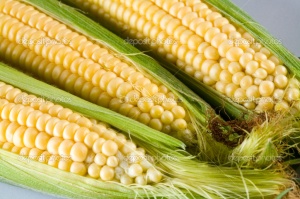
(Magwere, Chibage)
The staple food in Zimbabwe is maize. We can do so many different things we can do that have different effects on our body as a starch
- (Boiled maize on the cob) Magwere akaboilwa. It is important to understand that this is different from corn on a cob because corn and maize are two different species. This is incredibly nutritious as a starch but because it is still whole, there is added fibre that is great for digestion
- Sadza. This is made from maize meal (finely ground maize). Sadza is used as a starch for nearly all Zimbabwean meals and is a prominent feature in our culture. It is usually served with collards, cabbage or a number of different traditional and contemporary vegetables and meat. Sadza’s nutritional value lies in the slow release of energy as well as being low in calories and pretty much burns fat just from eating it because it’s served so hot (LOL)
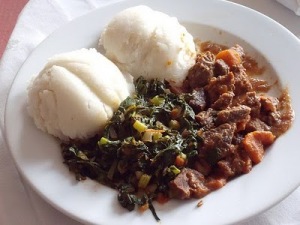
Maize meal pap. A very thick paste used for starch in Zimbabwe. (staple food)
- Porrigde. This is a simple maize meal porridge that packs high slow releasing energy and will keep you full for very long
- Maputi. There are 2 types of maputi (in pictures). The first is maize that is left over in the grinding of maize meal used for Sadza. This is then roasted and will pop to look like popcorn. These maputi are a healthier alternative to popcorn as they have no fat content at all and do not require fat or oil to pop them. The second type of maputi are simply roasted maize seeds. This needs fat to roast and it does not pop. Both types are very healthy snacks which were started by our ancestors and was carried through the ages
**It is important to stick to traditional farming methods when it comes to corn and maize as GMO maize has been linked to tumor development however there is still much debate on whether this link is valid** Luckily, one is able to tell the difference between organic and mass-produced corn as it will be clearly labelled on the packaging. READ YOUR LABELS!
Wheat, rice and potatoes are also commonly used in meals in Zimbabwe
There are other foods that we eat that aren’t always put in a meal setting and are also not a snack.
2. Sweet potato:
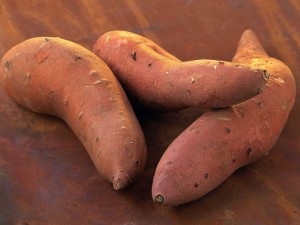
(Mbambaira)
we boil sweet potato and have it as breakfast or any given time of the day. It is usually served alone or with avocado or butter. Sweet potato is endowed with vitamins A, C and D. They also contain magnesium which is good for relaxation. The pairing with avocado introduces vital fats and good cholesterol 👍
Sweet Potato is a renowned cancer-fighting food because of its high levels of Beta-carotene and fights cancers such as leukemia, breast cancer, gallbladder cancer, kidney cancer, liver cancer and lung cancer. Sweet potato is pretty much a cancer warrior. Why people would want to deny this food (given its SUPERPOWERS), baffles me. I love me some sweet potato with butter or mashed with milk, butter and sugar (nom :))
3. Taros
aka Madhumbe (took me 4 hours to find that translation :/)
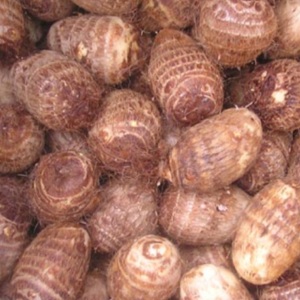
Found in Chinese and Zimbabwean cuisine
This is a root vegetable that is farmed in Zimbabwe. It is boiled in a little salt, peeled and served as it is. Taros are rich in various vitamins (A and C), packed with magnesium, potassium, high fibre and a low glycemic index (GI). A low GI indicates slow release of sugar, hence we stay fuller and more energized for longer. Taros have also been found to have pro-biotic effects, helping to fight against and protect from digestion-related cancers.
THIS IS THE BEST PART:
Taro root can also be made into a plaster that is applied to the skin to draw carcinogenic toxins out of the body. Repeated applications may be effective in removing carbon and other minerals sometimes found in tumors.
Finally, Taros have an alkaline nature which is beneficial in treating advanced stages in cancers.
(How is that for those who spent their lives denying MADHUMBE?)
These are just a few examples of outstandingly nutritious Zimbabwean foods
There are so many more that we find embedded in our culture. All we have to do is accept it and find them out. Looks like the ancestors knew best.
4. Maheu
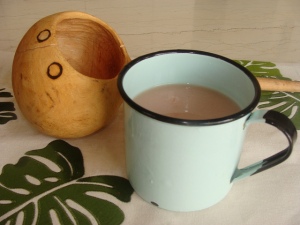
A traditional Southern African non-alcoholic drink
This is traditional drink made in Southern Africa out of fermented mealie meal pap. This drink used to be seen as a delicacy for adult men at occasions such as weddings and funerals however, as the times have changed, mahewu is found in shops in either the powder form (add water and leave for a few days to ferment) or in the liquid form which also comes in flavors. Maheu has the similar nutritional content as it’s parent ingredient, maize so as a drink, contains many nutrients. It is a fast way of getting the nutrients you need for your body without having to sit down for a meal.
This is a taste of my culture in which I am very proud. I would never ask to be part of anyone else’s culture because I was born into it hence, my body is made for it and the foods within my culture could be more effective to me and the people in my culture than a bottle of supplementary pills or medicine to treat minor sicknesses. The more we run from our traditional cuisine, the closer we get to diseases we were never supposed to suffer from. We start to gain or lose weight in ways we did not imagine. By changing the fuel we give out bodies, we ask for problems and this is the main reason Africans and Asians have such high statistics of obesity and cancers while in foreign countries. THINK ABOUT THAT.
REFERENCES
Share it. Let your friends know :
Related
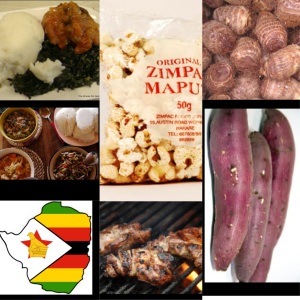





Jun 20, 2013 @ 04:22:37
So insightful. .. I love this. By far my favourite post… a taste of Zimbabwe :)…. Not only was it a great read but it made me miss my country and all the yummy food.. Leaving wiser than when I came… Thank you for this 🙂
Jun 20, 2013 @ 05:58:07
Thank you! Glad I could be of help!!
Jun 20, 2013 @ 04:44:34
Reblogged this on NicoleNutri's Blog.